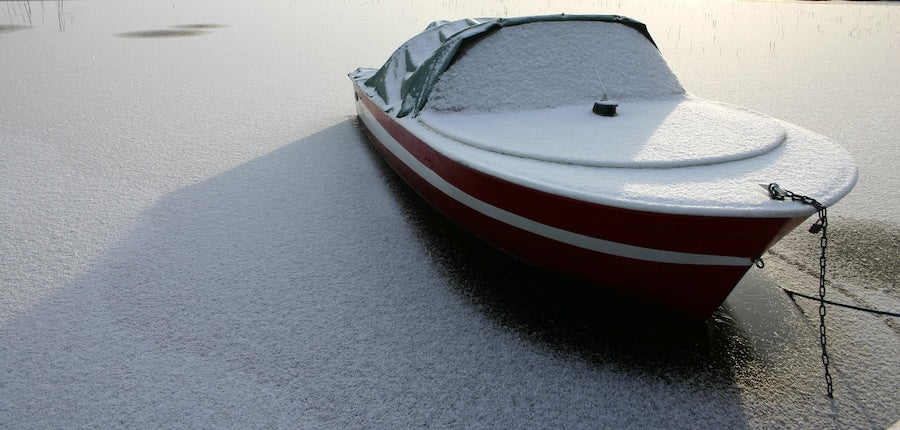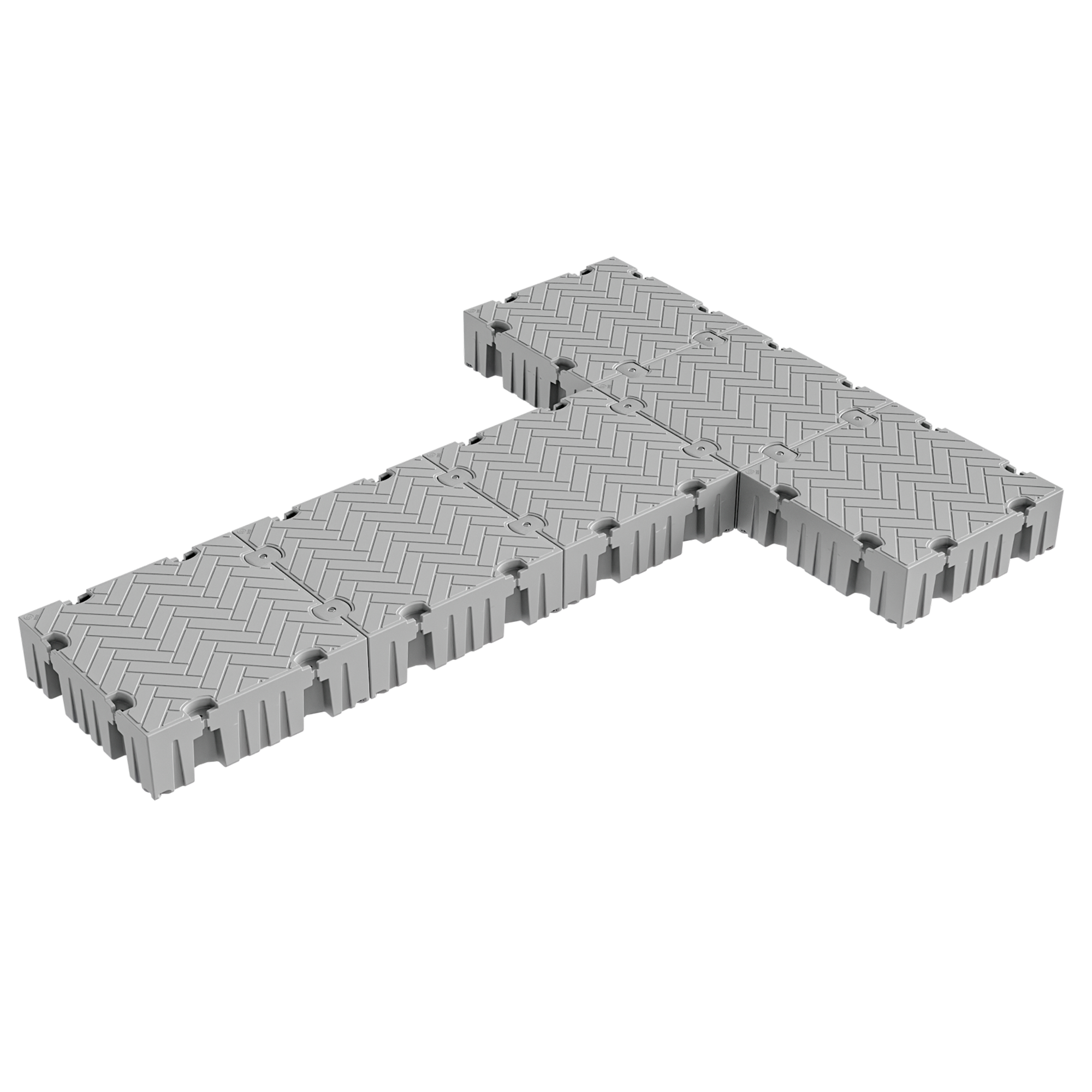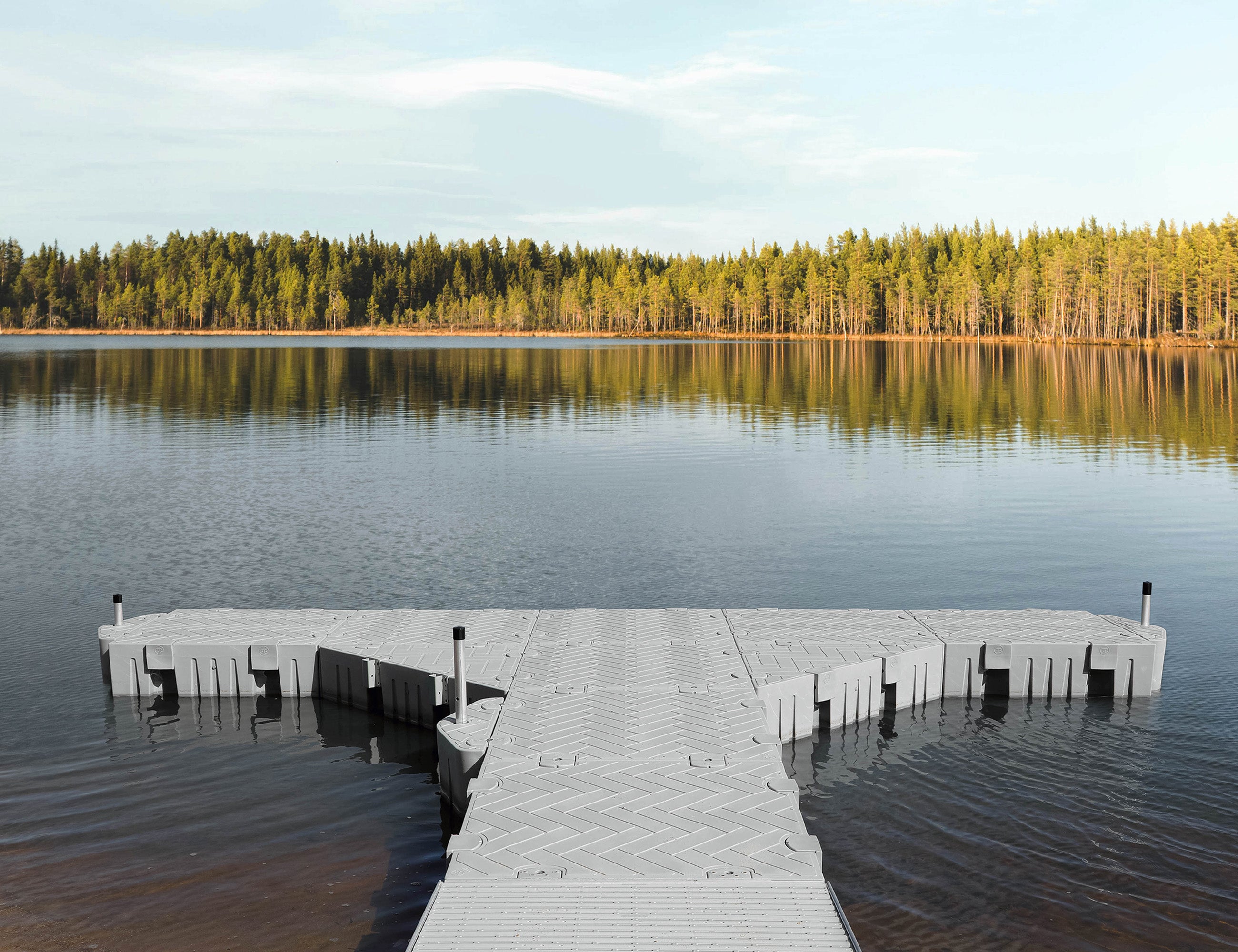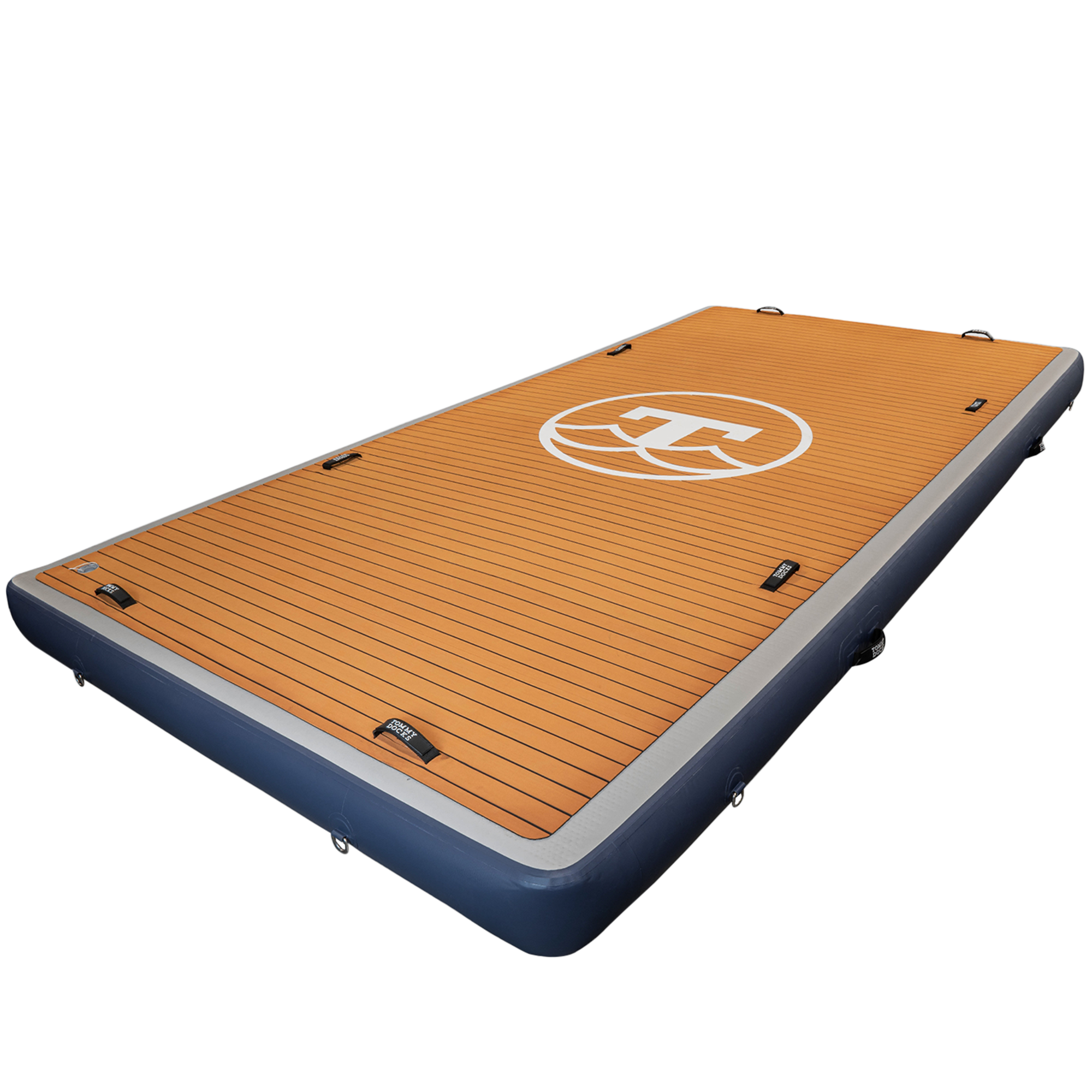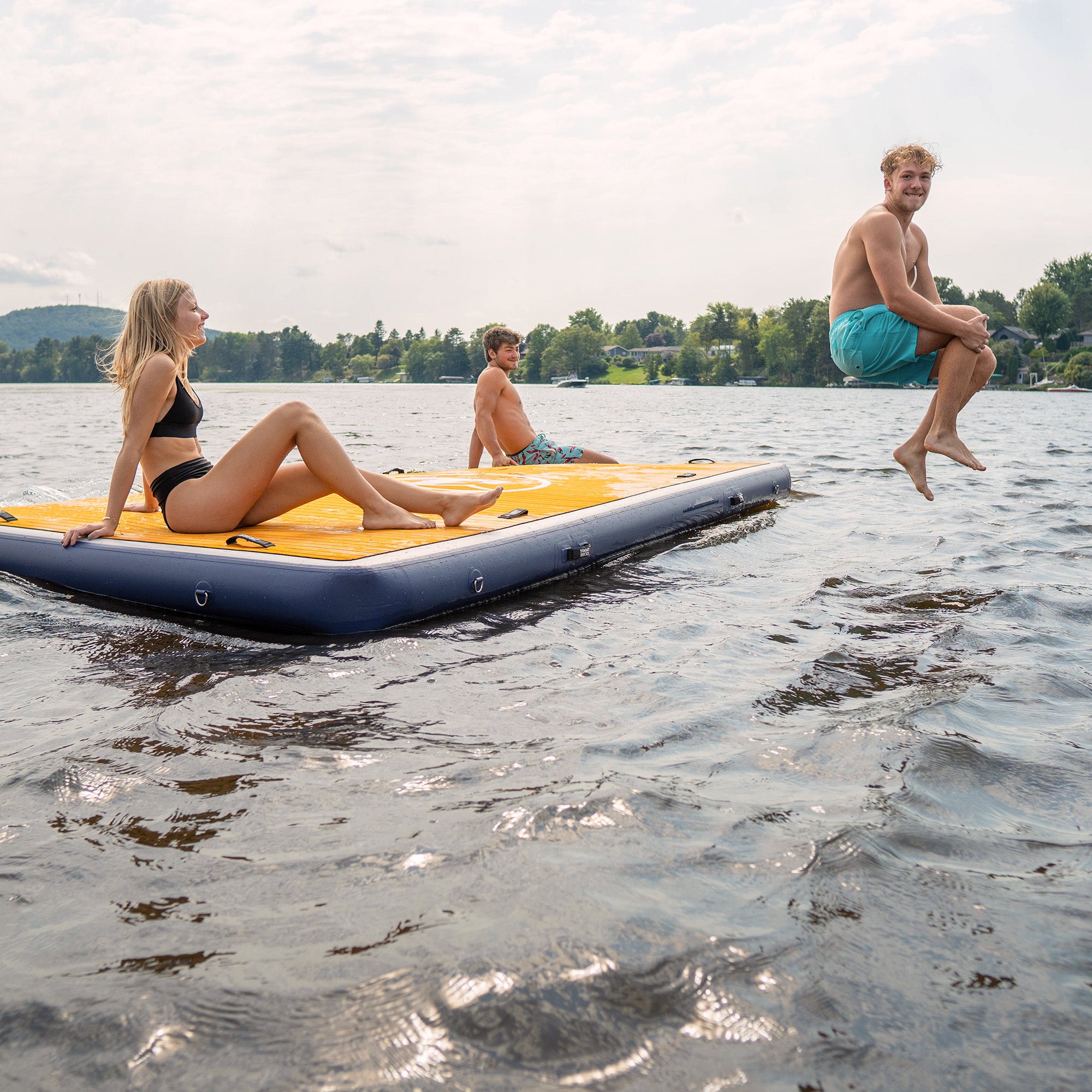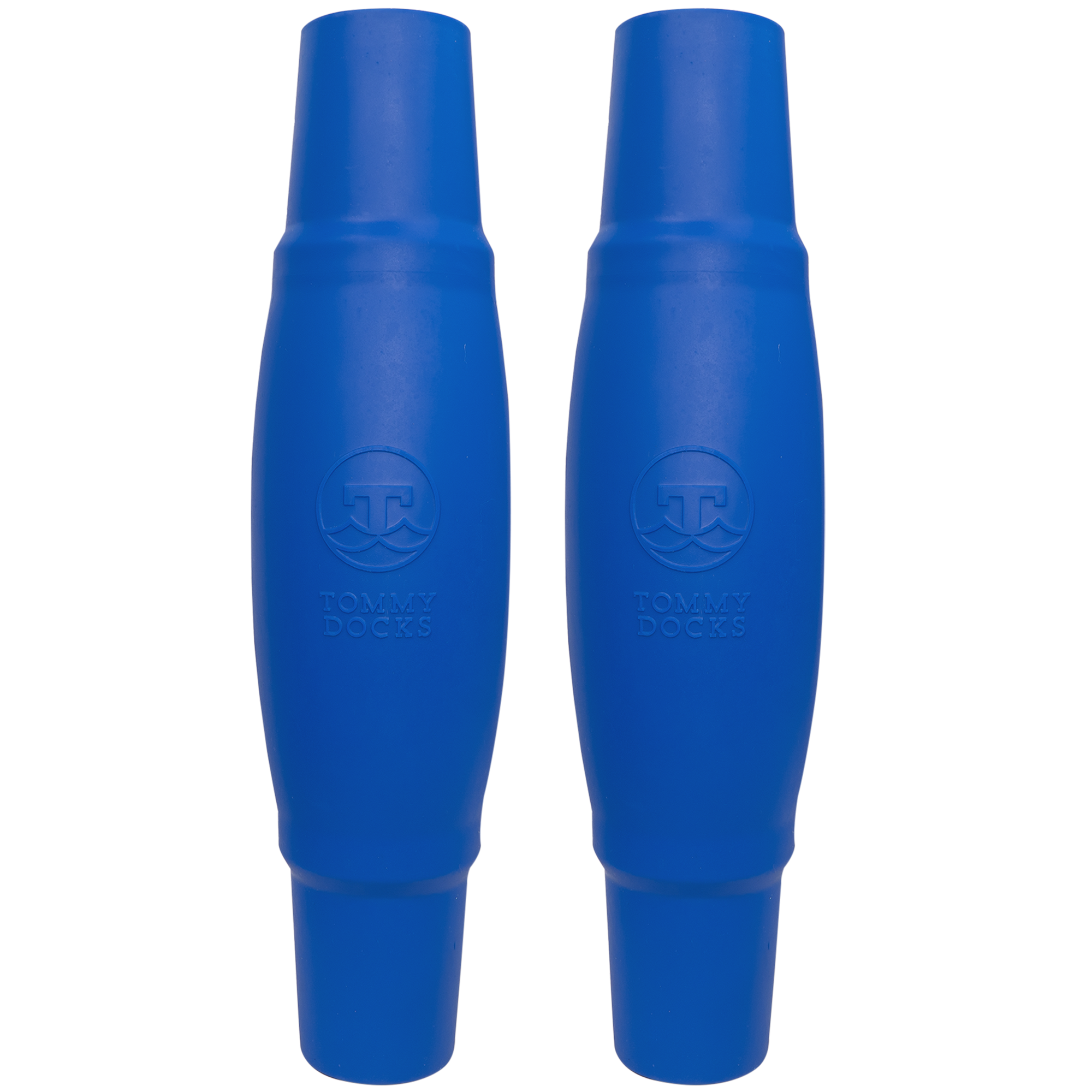As autumn sets in, it’s important to prepare both your boat and dock for the winter. Taking steps like winterizing the boat motor, protecting the dock, and storing accessories now helps prevent damage from ice and snow, making it easier to get back on the water when spring returns.
Deciding Whether to Remove a Dock for the Winter
It’s crucial to know whether removing the dock or leaving it standing is the best option for the winter. This depends on your location, as well as several other things. If you’re located somewhere that stays warm all winter, there’s no need to go through the work of removing the dock. However, if the water under the dock tends to freeze, the safest option is removing the dock for the winter.
At the same time, only some kinds of docks can be removed and replaced based on the season. If you have a stationary, permanent dock, it’s not created to be moved. Those who own a floating dock, on the other hand, will find that you have the option of moving the dock somewhere to be stored through the winter. Pipe docks and their sections can be removed or lifted from the water during cold weather.
If you have a floating dock, you can choose to keep it out if the following steps are taken:
-
Inspect all the hardware to make sure all components on the dock are secure. Remove accessories like dock ramps and ladders.
-
Loosen the anchor chains on the dock so it can better adjust to water levels as they shift.
-
Tie a line from a secured item on land to the dock to prevent it from floating away.
-
Take care to mark the dock so people out on the lake know it’s there and can avoid it.

Winterizing Your Boat for the Cold Months
While you’re preparing the dock for ice and snow, it’s also important to go through the winterization process for your boat. A little extra work in the winter months can prevent freeze damage, avoid expensive repair costs, and make launching much easier next spring.
When winterizing your boat, focus on these fuel system and engine steps to protect against freeze damage and costly repairs.
-
Fuel system prep: Add a fuel stabilizer and top off the fuel tank to reduce condensation.
-
Replace filters: Swap out the fuel filter and inspect the fuel line for cracks or wear.
-
Outboard motor: Flush the cooling system with fresh water, then run antifreeze to protect the engine block and water pump.
-
Inboard motor: Drain the lower unit, circulate antifreeze, and remove the drain plug to prevent trapped water from causing damage.
Don’t forget the spark plugs! Spraying fogging oil into the spark plug hole can protect engine parts from corrosion during long storage. Whether you choose dry storage at a facility or shrink wrap protection outdoors, making the effort now protects your boat motor through harsh weather and gives you peace of mind until boating season returns.

Protecting a Permanent Dock from Frigid Temperatures
If you own a dock that can’t be removed, there are still options to prepare it for the winter weather that’s on its way. One of the most critical items to have available is a deicer, which can be used on the dock’s legs. This assists with oscillating the water so that there’s less chance of any damage.
Another thing you can do to keep your dock in good condition is waterproofing it. You should also be sure that the boat lift is working correctly and there aren’t any structural issues that might worsen over the winter. Keep in mind that preparing a dock for winter weather makes it less likely that there will be damage, but it isn’t a certainty. It’s a good idea to look at your insurance coverage before winter comes.
Consider Dock Bubblers
A dock bubbler helps keep ice from forming by releasing air bubbles that circulate warmer water around your dock. They work best in stable water conditions but may be less effective in shallow areas or where moving ice is common. For best results, run the bubbler from November until ice is set in January, and again in March to speed melting.
Removing and Storing Accessories and Extras
A quick and easy way to get started with winter dock preparation is to store any accessories. Put away items like chairs and tables in the basement, garage, or shed so they aren’t exposed to the cool temperatures for months. It’s up to you where you choose to store them, but you want to be sure it’s a location without moisture or cold temperatures. While keeping your dock in the best condition is essential, it’s also a good idea to make sure your accessories are somewhere safe while the dock isn’t being used.

Perform All Needed Routine Maintenance
While you’re out removing accessories, there’s another task you can take care of. To prevent damage in the winter, you should make sure your annual maintenance has been taken care of. This starts with a simple visual inspection of the dock. Look for signs of wear and tear that should be repaired. If there are issues, take care of them rather than waiting until the spring.
A deck scrubber is a great tool to get your boat’s dock looking its best. It can remove fungus and algae that has grown on and attached to your boat dock. While you do the cleaning, spray the dock with water to see what areas easily repel it and which do not. This will give you an understanding of where you might need to reseal the materials to protect the dock.

Routine Boat Maintenance: The Next Step
Dock care and boat care go hand in hand before winter storage. As you inspect dock hardware and reseal wood surfaces, take the time to give your boat the same attention. A thorough cleaning inside and out helps protect against mildew and corrosion. Check all engine parts, including the fuel line, spark plugs, and lower unit, to catch problems before the freeze sets in.
Just as you remove dock accessories and store them in safe storage areas, move boat gear and electronics indoors. Lubricate moving parts on the boat motor, make sure the drain plug is removed, and double-check that the cooling system is winterized properly. Taking these winterization steps now reduces the risk of expensive repairs and helps both your dock and boat withstand harsh winter weather.
Get Through the Winter with Ease by Preparing Your Dock & Boat
Even if you live somewhere that gets cold and icy in the winter months, that doesn’t mean you can’t look forward to a full boating season next spring. Taking time now to prepare both your dock and your boat protects your investment from freeze damage, harsh weather, and expensive repair costs. From checking your boat motor, fuel tank, and cooling system to removing dock accessories and storing them in dry storage areas, every step helps.
Whether you use shrink wrap or a storage facility for your boat, or keep your permanent dock protected with a bubbler, the right winterization process ensures you’ll be ready for the water as soon as the ice clears. By winterizing both your dock and your boat together, you’ll avoid major headaches and enjoy a smooth return to the water when the warm weather arrives.
Contact Tommy Docks today for questions any of your Dock Kits, Dock Hardware, or Dock Accessory needs!

